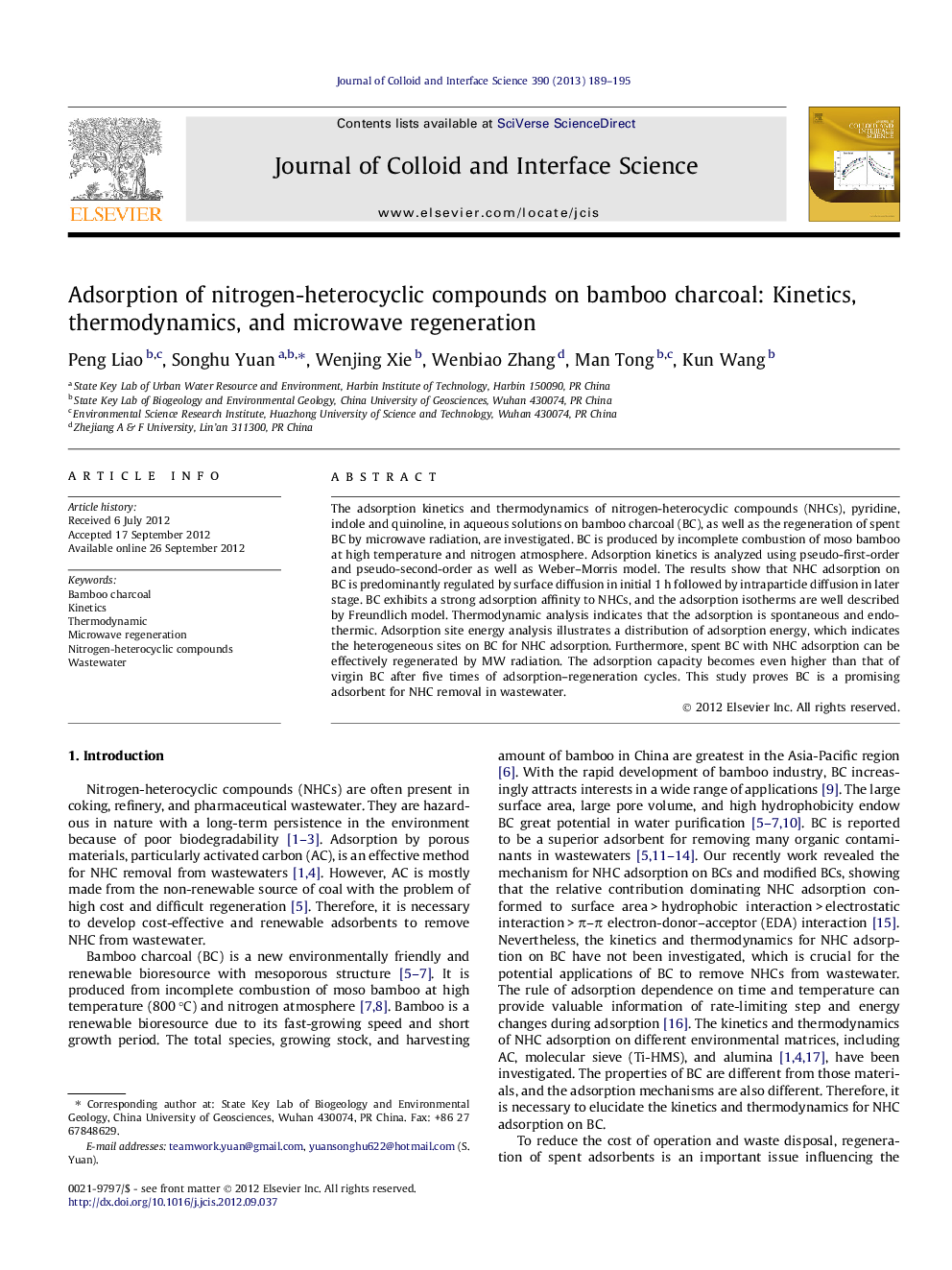| Article ID | Journal | Published Year | Pages | File Type |
|---|---|---|---|---|
| 607846 | Journal of Colloid and Interface Science | 2013 | 7 Pages |
The adsorption kinetics and thermodynamics of nitrogen-heterocyclic compounds (NHCs), pyridine, indole and quinoline, in aqueous solutions on bamboo charcoal (BC), as well as the regeneration of spent BC by microwave radiation, are investigated. BC is produced by incomplete combustion of moso bamboo at high temperature and nitrogen atmosphere. Adsorption kinetics is analyzed using pseudo-first-order and pseudo-second-order as well as Weber–Morris model. The results show that NHC adsorption on BC is predominantly regulated by surface diffusion in initial 1 h followed by intraparticle diffusion in later stage. BC exhibits a strong adsorption affinity to NHCs, and the adsorption isotherms are well described by Freundlich model. Thermodynamic analysis indicates that the adsorption is spontaneous and endothermic. Adsorption site energy analysis illustrates a distribution of adsorption energy, which indicates the heterogeneous sites on BC for NHC adsorption. Furthermore, spent BC with NHC adsorption can be effectively regenerated by MW radiation. The adsorption capacity becomes even higher than that of virgin BC after five times of adsorption–regeneration cycles. This study proves BC is a promising adsorbent for NHC removal in wastewater.
Graphical abstractFigure optionsDownload full-size imageDownload high-quality image (81 K)Download as PowerPoint slideHighlights► A novel cost-effective biosorbent was investigated for NHCs adsorption. ► Bamboo charcoal (BC) exhibits a strong adsorption affinity to NHCs. ► The kinetics and thermodynamics mechanisms regarding BC adsorption were explored. ► Spent BC with NHC adsorption can be effectively regenerated by microwave radiation. ► BC could be used as a potential adsorbent for NHC removal in wastewater.
